Where Career Tech Meets STEM Education
A MiddleWeb Blog
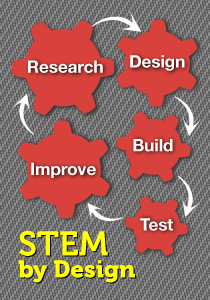 When writing about technology – the T in STEM – I’ve yet to mention Career and Technical Education (CTE), and some of my savvy readers have pointed that out.
When writing about technology – the T in STEM – I’ve yet to mention Career and Technical Education (CTE), and some of my savvy readers have pointed that out.
Okay – I’ll admit to thinking of CTE as a mostly high school curriculum. Then I typed middle school career and technical education into a search engine and got an eye-popping number of hits. A couple of hours of mouse clicks later I’m convinced that this program can play an integral role in advancing STEM goals.
What is CTE?
We usually think of these courses as the skilled trades – welders, assemblers, machinists, electricians, and so on. These skilled trades are a significant part of our economy but are among the hardest jobs to fill in the United States in 2015.
Today’s CTE offerings may include a much wider variety of career-oriented subjects, including health care occupations, agriculture, architecture, construction, audio-video technology and communications, and information technology (IT), to name a few.
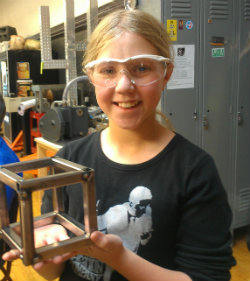
One reader commented on my 1/20 blog about defining STEM: Technology education . . . focuses on the integration of scientific knowledge, technological processes, design, engineering, and problem-solving for the creation of useful products. The Association for Career & Technical Education describes CTE as cutting-edge, rigorous, and relevant . . . education that prepares youth and adults for a wide range of high-wage, high-skill, and high-demand careers.
Sounds a lot like STEM to me. Here are some connections I unearthed between CTE programs and STEM projects. You CTE experts out there – do you agree?
1. CTE addresses many of the same soft skills and mindsets that STEM addresses. Currently, industry is facing a scarcity of workers who are skilled not only in the latest emerging technologies, but in soft skills. Companies want workers with hands-on competencies, the ability to learn new skills, a mindset of continuous learning, and an aptitude for innovation. CTE focuses on building those skills, along with a strong emphasis on design – the heart of the STEM world.
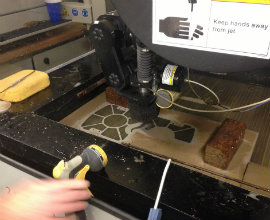
A CTE student comes technology-ready. These students are comfortable handling materials and creating prototypes and solutions. One thing I find intriguing: CTE encompasses a wide range of technology and may include graphic design, bringing a strong tie to the arts. One article suggests that solution designers need more creative talent and ideation, and recommends adding artists and science fiction writers to the mix of folk who work together to design engaging solutions. (Perhaps, in the case of middle schoolers, science fiction readers.)
3. CTE offers a hands-on instructional approach. According to this article from ACTE Issue Brief, CTE programs use the same student-engaged instructional approaches as STEM. The teacher plays the role of a facilitator or guide, equipped with the knowledge and skills to help students advance. CTE courses integrate STEM content and can help students become more STEM literate. (This increases the chances that students will consider STEM-related careers.)
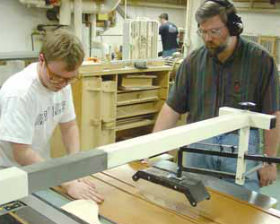
5. CTE actively pursues diverse groups of students to participate in STEM careers. STEM programs focus on attracting diverse groups of students from different races, ethnicities, socioeconomic levels, and genders. CTE courses play a significant role in growing the diversity in the STEM workforce by attracting students from underrepresented populations to choose STEM coursework and enter STEM career fields. For both CTE and STEM programs, making the program inclusive of all students is an intentional, strategic goal.

Check out the kinds of CTE courses some middle schools offer. These include:
- Computer Skills and Applications
- Exploring Career Decisions
- Exploring Business, Marketing, and Entrepreneurship
- Technology Design and Innovation
- Technological Systems
- Exploring Agriculture Science
- Exploring Biotechnology in Agriculture
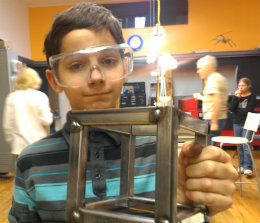
► In a recent joint op-ed article in the Oregonian, Jim Piro (industry leader) and John Mohlis (labor leader) state their concerns about the lack of hands-on, applied learning experiences needed for 21st Century economy. They make a case for CTE-STEM education to prepare students to step into the career pathways.
Is Career Technical Education (CTE) the “T” in STEM?
I’d love to hear what you think!
Photo credit:
Feature image – Rim inside width






























CTE (as in Industrial Arts, Home Ec, Agriculture, and Business, by their old names) was doing STEM long before others saw the benefits. Check out the Standards for Technological Literacy of 2001. The lowly shop teacher, however, was never seen as a math or science expert, nor did they see themselves as such. Of course they applied STEM concepts, but not integral to academic success. I’m glad to see that changing.
SO TRUE!
I’m glad to see that changing as well, Brad, although it seems that the old concept of “shop” still sticks in some places. I would imagine that to make CTE have even more impact, the science and math teachers would collaborate closely with the CTE teacher and go deep into relevant science and math concepts, while the CTE teacher would focus on helping kids apply those specific concepts to create products. Or, at least, that’s how I’m thinking now.
Thanks Anne,
I was hired out of manufacturing nearly 15 years ago to teach vocational skills to students. I have always been a believer that a highly qualified vocational instructor has math and science skills that far exceed the perspectives of those with general education backgrounds. This could be a perfect time to merge resources. khake.com is a great resource for teachers and students to find directions in CTE and STEM.
Dan
Thank you for calling khake.com to our attention, Dan. That is a good resource. (For readers who check this site out, be sure to click on the Vocational Information Center link on the opening page.)
I’m a big believer in merging resources and in ongoing collaboration among teachers in schools. Thanks so much for leaving manufacturing and becoming a teacher!
In NJ Technology Education was never part of CTE. CTE needed 3 years and a certification test. Technology Education was a subject equal to science and math and general ed. like science and math. Some states used Perkins money for TE so therefore it became CTE in those states. I don’t believe Technology Ed and CTE to be the same things, some do, due to funding. I think TE is still a subject area that was STEM from the start. As soon as there is a CTE labels it takes a different seat on the bus in some places. Most of the activities out there for STEM were also done in TE programs. Some folks just changed the name of IA to TE and thus TE got the CTE label. 100 percent different.
Hmmmmm . . . I learn something new every time you post a response, Mark! Thinking about other ways TE would be used in STEM, would that include mostly digital technology? Programs like coding and website design? Autocad? I know those are part of some school’s programs but the schools I’ve taught in and visited have focused predominantly on keyboarding, word processing and spreadsheets, presentation skills, and the Internet as a curriculum. Where do you see computer curriculum/skills being integrated with math and science in solving engineering challenges? (Other than kids just using computers to go to different Internet sites.)
Thanks for continuing to push me on this topic.
Technology Education is not Computer Education. You identify the major problem with TE’s identity. When folks see the word Technology they think Computer. The wheel was technology to the caveman.
TE is closely related to Engineering Ed. The computer is a tool as is the hammer. Keyboarding programming at the high school level was most often in the Business Ed Dept. Computer Ed. started out in many math teachers teaching it. IF you had problem solving and design to coding, web development CADD and architecture you could also be in the word of TE.
Computer skills are skills that can be added to most any class.
TECHNOLOGY: “processes used in the production of goods”
The application of knowledge to solve human needs and wants and to extend human capabilities.
So it is a process ,not a thing.
Great insight Mark. So when kids construct something to solve a problem, they are creating a technology – right? That really means that it is not possible to do STEM without including technology. I like that thought!
Great topic, Anne! Members of the National Science Teachers Association should take a look at the April 2015 issue of our member newspaper, NSTA Reports, which featured the story “Providing Real-World Science Through CTE.” Members can read it online at http://www.nsta.org/publications/nstareports.aspx